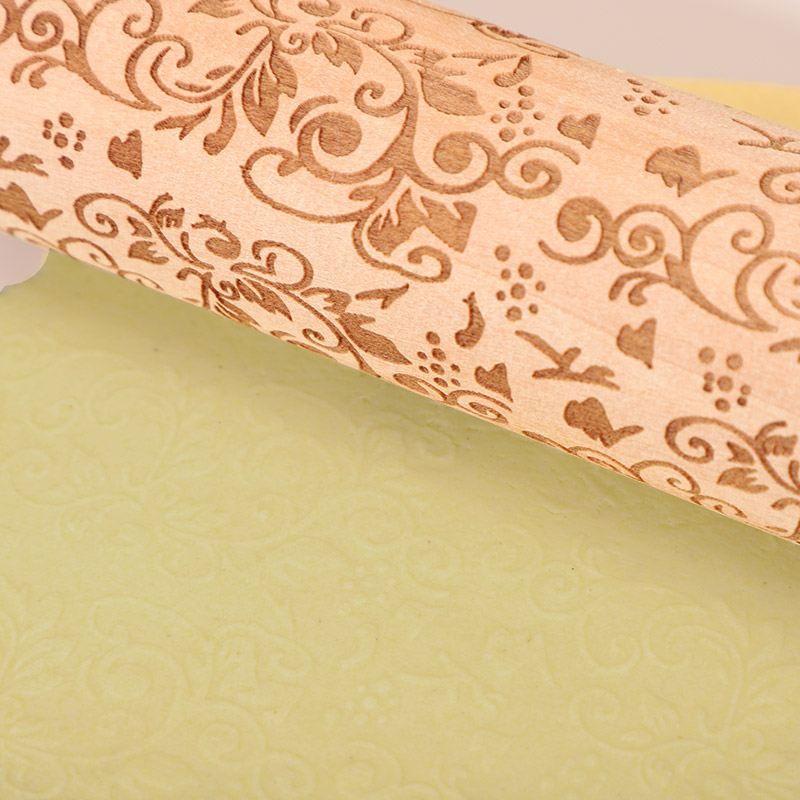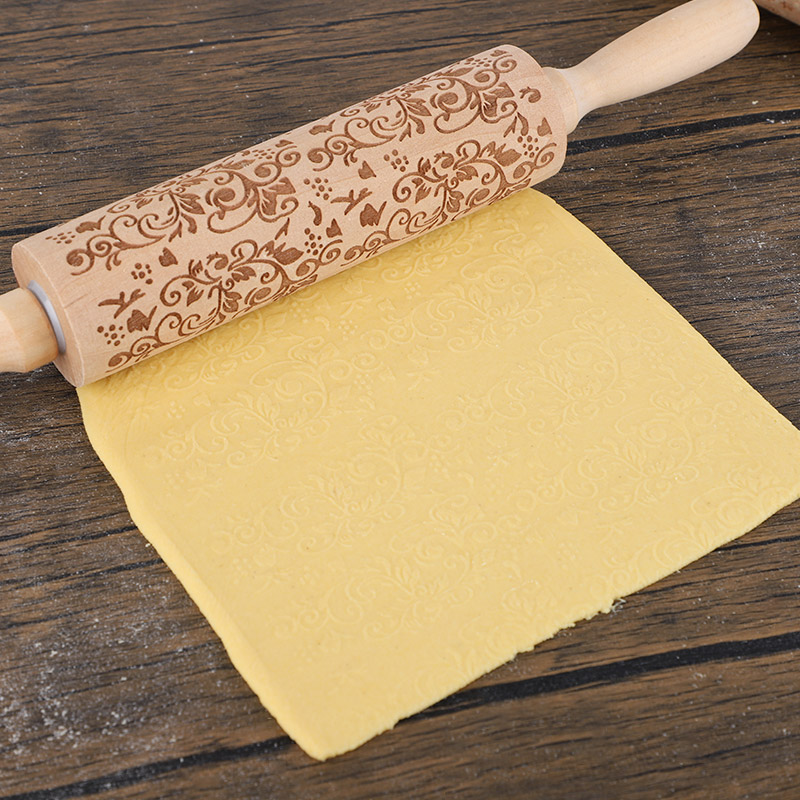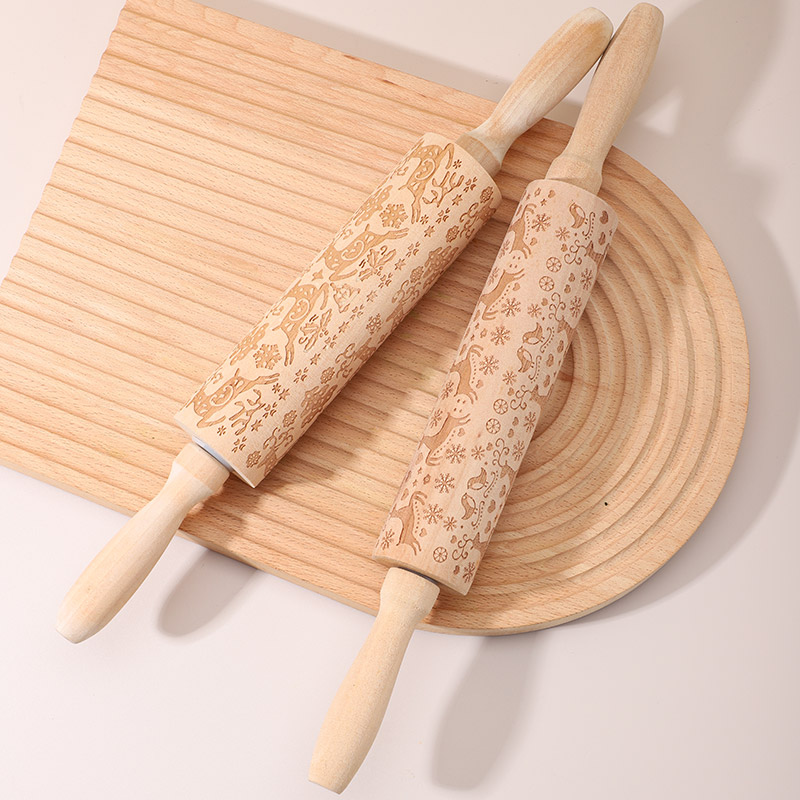The embossed rolling pin is a versatile tool used in baking and cooking to create decorative imprints on dough, fondant, or other pastries. Here’s a detailed guide on how to use an embossed rolling pin:

- Preparation:
- Ensure that your embossed rolling pin is clean and dry.
- Dust the rolling pin lightly with flour or powdered sugar to prevent sticking.
- Selecting the Right Dough:
- Embossed rolling pins work best with dough that is not too sticky or too dry.
- Choose a dough recipe that is suitable for shaping and rolling, such as sugar cookie dough, shortbread dough, or pie crust dough.
- Rolling Out the Dough:
- Divide your dough into manageable portions.
- Flatten the dough with a regular rolling pin to a thickness of about 1/4 inch (0.6 cm).
- Dust the dough lightly with flour or powdered sugar if needed.
- Using the Embossed Rolling Pin:
- Hold the embossed rolling pin by its handles and position it at one end of the dough.
- Apply gentle pressure and roll the pin firmly but evenly across the dough, moving from one end to the other.
- Ensure that the pressure applied is consistent to achieve a uniform pattern.
- Lift the rolling pin and reposition it slightly overlapping the previous imprint.
- Continue rolling until the entire dough is imprinted with the desired pattern.
- Troubleshooting Tips:
- If the dough sticks to the rolling pin, dust it lightly with flour or powdered sugar before rolling.
- If the pattern doesn’t turn out clearly, try applying more pressure while rolling, or dusting the dough with more flour.
- If the dough stretches or distorts the pattern, it may be too soft. Refrigerate the dough for a short time to firm it up.
- Baking or Shaping:
- Once the dough is imprinted, you can proceed with baking cookies, tarts, or other pastries as directed by your recipe.
- Alternatively, you can cut out shapes using cookie cutters or shape the dough into specific designs using the imprints as a guide.
- Cleaning and Maintenance:
- After use, clean the embossed rolling pin by gently washing it with warm water and mild dish soap.
- Dry it thoroughly before storing.
- Avoid soaking the rolling pin in water or placing it in the dishwasher, as this may damage the embossed pattern.

Remember, practice makes perfect. It may take a few attempts to get comfortable using the embossed rolling pin and to achieve the desired results. Enjoy the process of creating beautifully patterned pastries!

